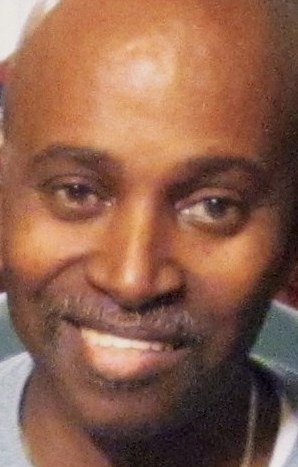 Photograph courtesy of The Innocence Project of the University of Virgina School of Law At about 2 p.m. on February 7, 1978, a 19-year-old student at the College of William & Mary went to her fiancé’s apartment in Williamsburg, Virginia, after her morning class was cancelled. When she attempted to enter the apartment with her arms full of groceries, she was confronted by a black man with a pistol in his hand who forced her inside and raped her.
She described her attacker as about 5 feet, 6 inches tall, weighing 140 to 150 pounds and 22 to 24 years old with bushy eyebrows. She viewed two police books containing mug shots, but did not select anyone.
Police then put together a photographic lineup that included a photograph of 22-year-old Bennett Barbour, who had been arrested in 1977 on a petty larceny charge. The victim initially picked up three of the photographs and ultimately selected Barbour.
On February 15, 1978, Barbour, a cook whose wife was pregnant with their first child, was arrested and placed in two separate lineups. The victim selected him both times.
Barbour went to trial in James City County Court on April 14, 1978. The victim identified him as her attacker.
An analysis of five hairs collected at the crime scene showed two pubic hairs that were consistent with the victim’s hair, two other pubic hairs that were not consistent with Barbour’s hair, and one head hair with characteristics associated with African American hair that also was not consistent with Barbour’s hair.
Serological analysis of a semen stain on the victim’s underwear showed the presence of Type A blood—the victim’s type—meaning the attacker was either Type A, did not ejaculate or was a non-secretor. Barbour has Type B blood and no test was performed to determine if he was a secretor.
Barbour presented an alibi defense, contending that the day before the attack, he and his brother went to an employment office in Richmond, Virginia, and afterward went to a bar. Sometime between 2 a.m. and 3 a.m., they drove to Grove, Virginia, to stay at the home of Barbour’s mother-in-law, Martha Johnson Falcoun. They remained there much of the day, and then drove Falcoun to a friend’s home where they stayed to watch a soap opera.
Sometime after 2 p.m. – when the victim was calling police – Barbour and his brother drove back to Williamsburg, stopping at two restaurants to ask about employment.
The defense was rejected by the jury which convicted Barbour of rape on April 15, 1978. He was sentenced to 10 years in prison.
Four and a half years later, Barbour was released on parole.
In 2005, then-Governor Mark Warner ordered testing of biological evidence from 1973 through 1988 that could be found in Burton’s files. The biological evidence in the Barbour case was located and submitted for DNA testing.
On June 8, 2010, the Williamsburg Police Department and the Commonwealth’s Attorney for Williamsburg and James City County were notified that the DNA tests excluded Barbour as the rapist. The Commonwealth did not notify either the victim or Barbour.
In January 2012, the Virginia Department of Forensic Science agreed to provide the names of about two dozen defendants whose DNA tests had resulted in an exclusion to Jonathan Sheldon, an attorney who represents Death Row inmates. One of those was Barbour, whom Sheldon contacted and informed him of the test result.
Barbour, who was suffering from cancer, immediately sought the assistance of The Innocence Project of the University of Virginia School of Law, which filed a petition for a writ of actual innocence was filed with the Virginia Supreme Court.
On May 24, 2012, the Virginia Supreme Court granted the petition and declared Barbour innocent of the rape for which he was convicted 34 years earlier.
The DNA profile obtained from the evidence in the case was linked to 56-year-old James Glass, whose DNA was in the FBI's DNA database because of a 1979 conviction for rape in New York. Glass was indicted in 2012 for the crime for which Barbour was wrongly convicted.
Barbour died of bone cancer on January 10, 2013.
In April 2014, the Virginia legislature approved a bill awarding $162,527 to Barbour’s estate. It was the first time such an award went to the family of an exonerated person, instead of to the person who was wrongfully incarcerated.
In October 2014, Glass was convicted of rape, abduction and weapons charges and was sentenced to life in prison. In 2018, Roy Watford III became the 12th person to be exonerated by DNA testing of evidence in Burton’s files. In 2019, Winston Scott became the 13th person exonerated by DNA evidence retained in Burton’s files.
|